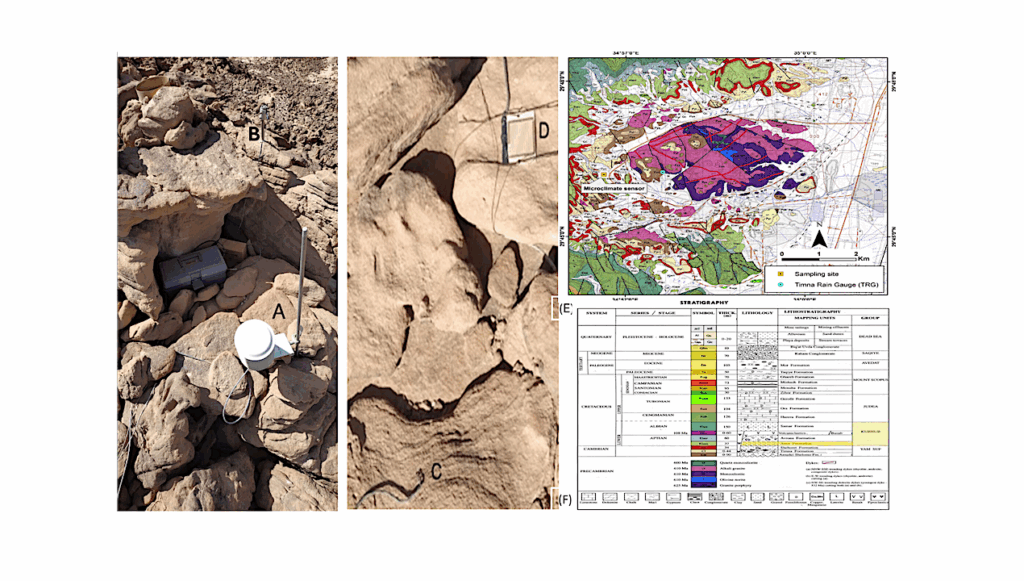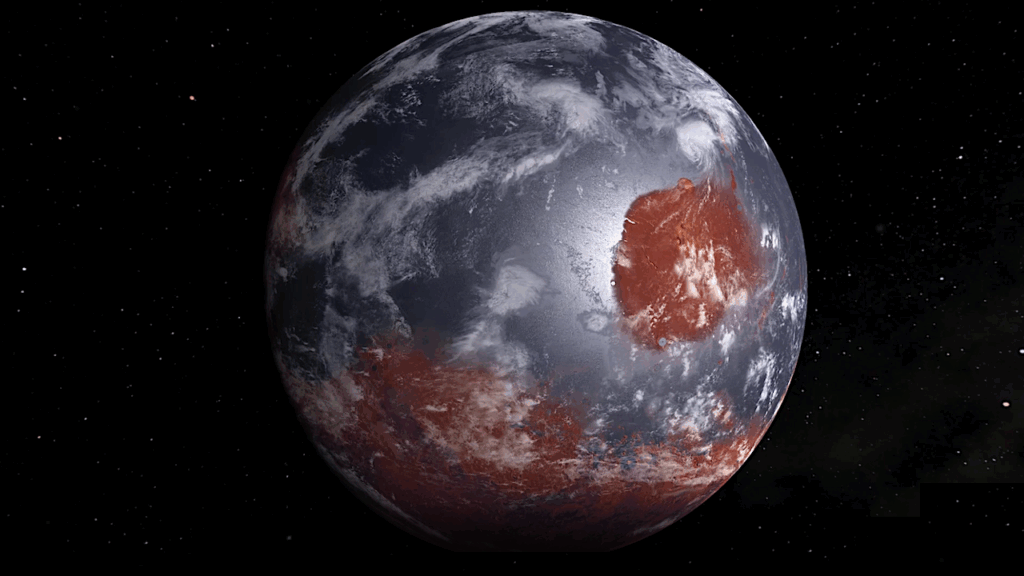Evaluating Solutions to the Faint Young Sun Problem

During the Archean eon, between about 3.8 billion years ago and 2.5 billion years ago, the Sun was about 20 to 25 percent fainter than it is today. With less sunlight to warm the Earth, the oceans should have been frozen over, but geological evidence suggests that this was not the case.
Some proposed solutions to this problem, known as the faint young Sun problem, include an atmospheric composition with higher concentrations of greenhouse gases, higher atmospheric pressure, increased cloud droplet size, and changes in land distribution and Earth’s rotation rate.
Charnay et al. used a three-dimensional global climate model coupled to a dynamic ocean model to examine these possible solutions. They find that an atmosphere that had 100 millibars of carbon dioxide and 2 millibars of methane 3.8 billion years ago, and 10 millibars of carbon dioxide and 2 millibars of methane 2.5 billion years ago — levels corresponding to 25 to 250 times the present level of carbon dioxide and 1,000 times the present level of methane — would have made it possible for Earth to have had a temperate climate with a mean surface temperature between 10 and 20 degrees Celsius (50 and 68 degrees Fahrenheit), close to the current climate.
The authors suggest that these levels of greenhouse gases are consistent with geological data, making such an atmospheric composition a viable solution to the faint young Sun problem. Cloud feedbacks were also shown to prevent a full snowball Earth from developing during that time period. The authors find that some of the other potential solutions could have produced some warming during the Archean, but none individually produced enough warming to avoid widespread glaciation.
Source: Journal of Geophysical Research-Atmospheres, doi:10.1002/jgrd.50808, 2013 http://onlinelibrary.wiley.com/doi/10.1002/jgrd.50808/abstract
Title: “Exploring the faint young Sun problem and the possible climates of the Archean Earth with a 3D GCM”
Authors: B. Charnay, F. Forget, J. Leconte, E. Millour, F. Codron, and A. Spiga: Laboratoire de Meteorologie Dynamique, Universite P&M Curie (UPMC), Paris; R. Wordsworth: Department of the Geophysical Sciences, University of Chicago, Chicago, Illinois.
Contact:
Thomas Sumner
+1 202 777 7516
[email protected]
The American Geophysical Union is dedicated to advancing the Earth and space sciences for the benefit of humanity through its scholarly publications, conferences, and outreach programs. AGU is a not-for-profit, professional, scientific organization representing more than 62,000 members in 144 countries.








